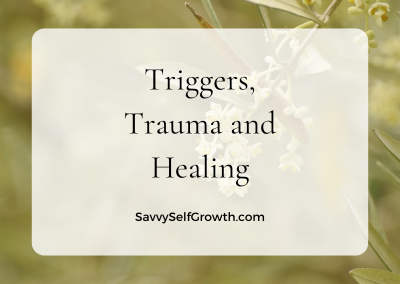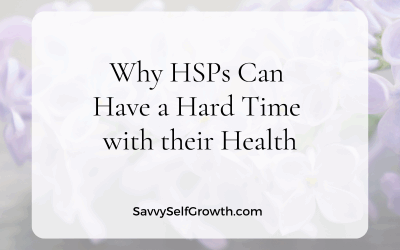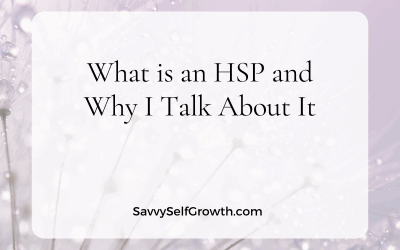I’m reading “The Body Keeps The Score” by Bessel van der Kolk. It’s an excellent book on how trauma affects the mind, body, and brain — and how to heal. It’s rich in simple explanations of complex concepts, and the components necessary to help our systems heal.
(I wrote about “Amy Amygdala” and “Theo Thalamus” (my terms!) here, in case you missed it.)
Of course, I’m excited that the author mentions the use of EFT (tapping on acupoints) at his world-renowned trauma Center.
I thought to say a few words (okay, quite a lot!) about trauma from my perspective of working with it, and how it affects all of us. If we’re highly sensitive people, even more so!
So what is trauma?
It’s on everyone’s lips these days, but what does it really mean?
Generally speaking, it’s an event (or recurring events), that overwhelms our nervous system’s ability to process it and put it into the past where it’s ‘over’. The acronym UDIN is useful to remember:
It’s an event that was Unexpected, Dramatic (high emotion like fear, terror, sadness), Isolating (we felt isolated even if we were surrounded by others experiencing the same thing) and we had No Resources to deal with it (we didn’t know what to do, felt helpless, trapped, immobilized).
Trauma includes big events like car accidents, war experiences, crime and so many other big events. Where our lives truly were in danger, we call them ‘Big T Traumas’,
However, it can also include ‘Small t Traumas’ where we had the perception of being in danger. We felt unsafe. For instance — a 4-year-old who faces an irate father even if there is no physical violence. Or a 6-year-old who asks a teacher for help, but gets a public humiliation about being ‘stupid’, instead.
Those seemingly smaller events also leave scars in our nervous system and have long-lasting effects. I see that in my office every day. The brain and body react in similar ways in both small and big T’s.
Of course, there are differences in magnitude!
On one end of the spectrum is PTSD, or complex PTSD when a lifetime of childhood trauma is exacerbated by yet another traumatic event later in life.
The other end of the scale
What I work with most commonly, is this:
A client brings something in their current life that bothers them. Something they just can’t get past. Maybe a friend that hurt them, maybe a husband that triggers them, perhaps a work situation where they feel unseen or unheard. We start using EFT (tapping) for the feelings and emotions they’re experiencing as they tell me about it. And into their head pops a memory of a long, long time ago…
I often hear this, accompanied by a puzzled expression:
- “I don’t suppose this has anything to do with it but…” or
- “I don’t know why this is coming up but….” or
- “That makes me think of the time when…” or
- “Really, it was so small, I don’t know why I’m thinking of this now….”
Why does this happen?
Our memories are always laid down in the brain with an emotion attached to it, especially if it was a strong or painful emotion. And when we experience that emotion again in future, we can more easily access the other times that we experienced that emotion, too. It’s like there’s links between memories with the same emotional content.
Hence, while we’re talking and tapping about say the rejection, fear, sadness or shame we experienced recently, we can remember something from years ago where we felt the same way (a gut wrench, or tight throat) or experienced the same emotion (anger, shame, sadness). The body and subconscious mind store all the bits that we have not fully dealt with, and we can access it again later.
We don’t arrive at our adult experiences as a blank slate
Simply put, we bring all the experiences we had thus far, into every situation. Though of course, we’re not aware of that.
All we know is that sometimes as an adult we feel triggered, and we can’t figure it out. We puzzle about the fact that the situation doesn’t warrant the reaction we’re having.
Examples:
- An interaction with a boss or colleague that set us off into a spiral of self-doubt.
- A partner’s facial expression (a twitch in an eyebrow or a pulled-up lip) that instantly makes us cringe, and then hide or lash out.
- A need we expressed that was ignored (like, “Please keep out of this room until I am finished with my appointment.”)
- Or even our inability to express a need (like, “I am aware of something that I want to do this weekend, but I don’t feel comfortable to express it to an important person in my life, for fear of their reaction.” (ridicule, anger or an argument))
What happens in those moments when we feel so triggered?
The subconscious mind taps into previous times we experienced it, and we literally experience what we did the first time something similar happened.
Clients are usually surprised when they think about an event that happened when they were 8 years old and can literally still feel the strong emotions of that day.
In 2000, Antonia Damasio and a team of scientists reported in an article in Science (the world’s foremost scientific publication) that “reliving a strong emotion causes significant changes in the brain areas that receive nerve signals from the muscles, gut and skin.” The team’s brain scans showed that “recalling an emotional event from the past causes us to actually reexperience the visceral sensations felt during the original event”.
It’s science, dear reader, and you’re not silly if this happens to you.
“But it was such a small thing!”
I hear this so often, too. “But it was such a small thing, how can it still affect me like this?”
The trouble is — we look back with the brain of an adult at something that happened when we were 6. It does indeed appear insignificant now. But to the child, it was an unsafe moment. Unsafe moments are stored for later use.
An example:
Say Dad shouted at Sally to be quiet. She wanted to play, but he had work to do and needed to concentrate. Looking at it from an adult’s perspective now, it does indeed look like a small thing.
But at 6 years old, Dad is twice Sally’s height, much stronger than she is, his face looked very angry, his voice was loud, the outburst came out of the blue, and there was no-one there to comfort Sally since mom was somewhere else. Sally felt isolated, scared stiff and helpless. That’s a UDIN, right there.
Unprocessed trauma is stored so our brain can warn us later when we encounter something similar.
So years later at the age of 40, Sally encounters a boss or partner with that same facial expression, the loud voice, the authoritative “Go away, and be quiet, don’t bother me” kind of response… and guess what? Sally’s 40-year-old body and brain responds in exactly the same way as her little 6-year-old self, who felt so unsafe. She either wants to run and hide, punch him, or she feels numb and immobilized.
How beliefs are formed
In those unsafe moments in our early years (before the age of 6), we form our beliefs about ourselves, the world, how safe we are, the kind of person we are. Our brain in those years does not yet have a filter about what’s true or merely an assumption.
Everything we experience and decide goes into the subconsious as ‘the truth’. We’re like sponges then, to learn about the world. Our ‘software’ is being programmed so we can function later without giving things too much conscious thought. It’s a bit like Artificial Intelligence — we learn a few apparent rules, so we can do something with it later.
In the moment of that unsafe feeling, Sally’s younger self would have made an assumption (or belief), as we all do at that age. Everything about that moment was important to her Amygdala — sights, sounds, smells, tastes, and sensations in the body.
Possible beliefs Sally could have made in that moment might include:
- Men are unsafe
- Red jerseys (jumpers in the UK) are unsafe (if Dad was wearing a red one)
- Angry faces and loud voices are unsafe and to be avoided
- I’m not wanted
- It’s not okay to have needs
- It’s wrong to want to play and have fun
- Work is more important than her
- She doesn’t count or matter
- She should be a good girl in future and be quiet as a mouse
Once a belief is formed, we usually keep seeing evidence of it everywhere. And most often, we will keep having experiences to reinforce that belief — because we see it everywhere. It’s kind of a little loop our brain has set up. And it’s truly with the sincere intention of keeping us safe in future.
So what do we do about this?
Simply put: Sally needs to process the original feelings, sights, sounds, and beliefs in her 6-year-old moment of isolation, and investigate the meaning she gave it at that moment. Was it really true, or just an incorrect assumption to keep her safe later?
Once her system has properly processed it, she will be able to recall that dad-moment and not feel any response in her body. She’ll be able to think about it in detail with a calm feeling of neutrality. She’ll also have re-processed the meaning she made of those moments (in the list above) so that it won’t feel true anymore.
How can Sally do that?
I keep marveling at how remarkably effective EFT tapping is for this. We bring the event to mind, apply EFT tapping to all the pieces of it, and feel completely calm and safe at the other end of it.
Tapping on the specific body points we use with EFT while being conscious of the thoughts, sensations, and emotions of that event sends calming signals to the amygdala. It helps the amygdala to realise that it’s no longer a threat, it’s over, we survived, and it can truly be ‘put into the past’ now. It goes into a different part of the brain and helps to heal and change the beliefs (the meaning we gave it) we made at the time.
So that next time Sally encounters that boss or partner, the original trigger is no longer like a smoke signal that says “Be careful, get out of here, this person/situation is unsafe!”
5 tips for working with Big and Small T’s:
One:
If you already know you have unresolved trauma, please do get help. It’s not necessary to settle for a life with it. Trauma is nothing to be ashamed of. We all experienced traumatic moments as children, that’s just the way life works. For some of us there were more difficult experiences than for others. If you had parents, siblings, or were in school, you will have some of those UDIN moments to resolve. Guaranteed.
Two:
If you keep encountering triggers as an adult, where the same type of person or situation keeps setting you off, you more than likely have some unresolved memories to take care of. It doesn’t have to be painful to do this! Talk therapy can often take years to resolve things. Understanding something is not the same as taking the charge out of it. EFT has several techniques available that make it more painless and much faster. What’s more — there is much scientific research out already on its efficacy. It’s certainly not a placebo! Follow Dr Peta Stapleton on FB if you want the research.
Three:
Everyone can learn EFT as a self-help method to keep calm during busy days. It can help us take care of stress, reluctance, procrastination, health niggles, worries, concerns, anxieties, and rumination. I regularly tap, especially on my walks. It doesn’t have to take a long time either… sometimes 5 minutes of tapping makes a world of difference.
Four:
For the Big T’s, I do recommend getting support from a professional. I see people asking for advice in Facebook groups and cringe. Most people are not qualified or knowledgeable enough to aid with trauma and the fall-out. Even as a seasoned EFT’er of 16 years, I pay other practitioners for the deeper work on my own issues.
Five:
To have an experience of EFT tapping, you can look up EFT on Google. There are vast numbers of people offering ‘tapping scripts’ or videos so you can tap along with them. I have many free EFT video’s available too.
AND! It’s important to remember — those can give you a taste and provide some relief in the moment, yes… Be aware though, that we can sometimes inadvertently ‘open the can of worms’ of Big T Traumas. Please make sure you have someone who can support you afterward.
Also — tapping scripts are the least effective way to make headway on our issues. Yes, they can provide effective temporary relief, but because they’re not aimed at your unique life events, results are often not permanent, and you might think that EFT does not work. If a carpenter doesn’t hit a nail straight on the head, it’s not the hammer’s fault!
In Summary:
- A single traumatic experience as a child can affect us as adults even when we think it’s insignificant.
- We don’t arrive at any adult experiences as a blank slate.
- Experiences in our childhood created unconscious triggers to keep us safe.
- Our childhood affects our experiences now.
- There is a way out — we don’t have to continue playing out those patterns forever!




